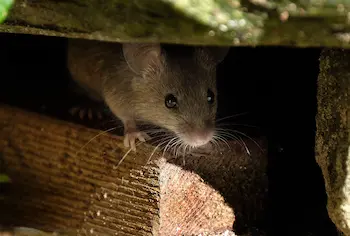
Millions of rodents live throughout the U.S., so it’s crucial to be efficient in your pest control. No matter your industry, preventing infestations before they begin is the easiest way to stay compliant with regulations, preserve your reputation, and maintain a responsible place of business.
Knowing the different types of rodents you might face, the damage they can inflict, and the best methods for prevention is essential to maintaining a rodent-free business. Here’s what you should learn now to get a head start.
Which Rodents are You Most Likely to Find?
Rodents like Norway rats, Roof rats, and House mice thrive by feeding on humans and animals without providing any benefits in return. Their presence can lead to inventory losses, possible shutdowns, and damage to your business’s reputation.
Being opportunistic feeders, these rodents are constantly searching for their next food source. Regardless of your industry—whether in food supply, food service, retail, hospitality, or property management—you must stay alert. Checking for signs of rodent activity should become a part of your regular routine.
House Mice
Mice are always on the lookout for food and a warm, safe place to nest. Their fur can range from light brown to dark gray, and they usually measure between 2 to 5 inches long. Since they can fit through gaps as small as the size of a pencil, it’s necessary to seal even the smallest openings to keep them out.
Mice are most active at night, when you and your team might not be around to spot them. However, you’ll likely see signs of their presence, such as chewed baseboards, torn food containers or cardboard boxes, and droppings. Mouse droppings are typically about a quarter inch in length, pointed at both ends, and found in groups.
While mice will eat almost anything, they’re especially attracted to carbohydrate-rich foods like grains, oats, rice, fruits, and seeds. They prefer to nest near their food sources, which is why they often make their homes inside walls close to kitchens, pantries, and food storage areas.
Tips to Prevent Mice Invasions:
- Seal gaps and cracks to block entry points, and cover any openings with steel wool.
- Create a clear, vegetation-free barrier around your building, and trim trees and shrubs to avoid contact with the structure.
- Consistently clean and sanitize kitchens and food prep areas.
- Store food in airtight containers and keep them off the floor.
Ignoring a mouse infestation could have lifelong consequences for your business. If you notice any signs of mice in your buildings, feel free to contact our team for professional support.
Norway Rats
Norway rats, also known as brown rats, street rats, or sewer rats, are omnivores that will eat nearly anything. With a keen sense of smell, they navigate their surroundings by detecting food. These rats can grow up to 11 inches long with brown or gray fur, and they can slip through gaps as small as ¾ inch. They also reproduce rapidly, with a single female capable of having up to five litters each year.
They prefer to live underground, as natural burrowers, making basements and crawl spaces prime nesting areas if they get inside your business.
Norway rats can present significant health risks, and are known to carry pathogens that can contaminate food and inventory with diseases. Be on the lookout for signs like gnaw marks, greasy trails along travel routes, and the sound of scurrying. Their droppings are larger and pellet-shaped, but less numerous compared to those of mice.
Tips to prevent Norway rat Invasions:
- Repair leaks and fix dripping faucets to eliminate moisture sources.
- Maintain clean trash bins and ensure dumpsters are securely sealed.
- Trim vegetation around the building to reduce potential burrowing areas for rats.
- Never leave food out in the open, especially overnight.
Roof Rats
Roof rats are commonly found outdoors, but their search for food and shelter may bring them into your business, particularly in attics, roofs, and chimneys. They specialize in climbing and can easily travel from tree branches or power lines to rooftops, or squeeze through gaps as small as a quarter.
With fur that ranges from light to dark brown, roof rats are a bit smaller than Norway rats, reaching lengths up to 8 inches. While they favor seeds and plant-based foods, these opportunistic feeders will eat almost anything they come across. Their powerful teeth allow them to chew through materials like plastic, soft metals, and other obstacles to reach food. Known for hoarding, roof rats often gather and store food for later use.
Signs of an infestation include gnaw marks, electrical issues from rats chewing wires within walls and ceilings, greasy rub marks along their frequent paths, and droppings about ½ inch long with pointed ends.
Tips to prevent Roof rat invasions:
- Prune tree branches to keep them away from the roof and limit access for rats.
- Inspect the roof for any cracks or openings and seal them effectively.
- Keep food areas clean and store food in well-sealed containers.
- Dispose of trash and waste frequently, making sure dumpsters are properly secured.
What to Do If You Suspect Rodents
A rodent issue can quickly spiral out of control without a proper strategy. That’s why working with a pest control expert like McCloud Pest Solutions is a smart choice to protect your business. A skilled technician will evaluate your property, determine the type of rodent causing trouble, and provide the best solutions for removal and long-term prevention.
While there are several signs of a rodent infestation, the most noticeable is seeing a live or dead rodent. If you spot a mouse or rat near your business, don’t wait—call a pest control professional immediately.
Have you seen any of these warning signs? Get in touch today to schedule a service through our website, or by calling 800-332-7805.
3 Rodents to Look Out For in Your Business Pest Control and Exterminators in the Midwest
Serving...